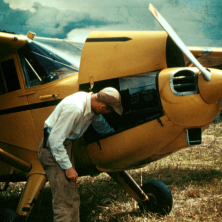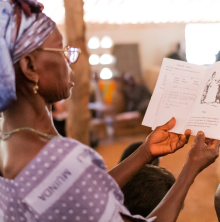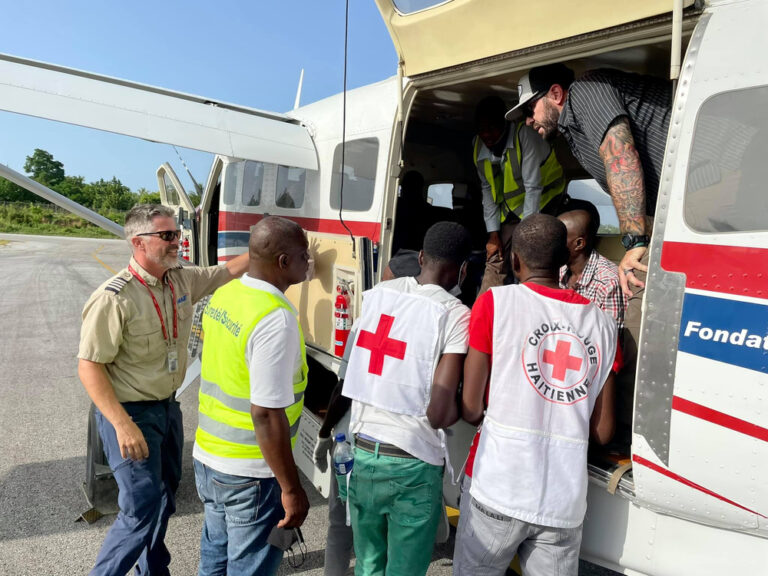Clean running water provides an avenue for the Gospel
By Kimberly van Veen | Photos courtesy of Lokisa Water Project, unless otherwise noted
Whenever MAF chaplain Sefiri Seepheephe visited the chief’s home, he knew what he would say.
The village headman for the mountain community of Kuebunyane, Lesotho, would bring up the lack of water for the approximately 1,500 Basotho people who lived in the valley. Even the medical clinic did not have water.
“I visited the chief almost every day, but there is no week that would pass by without him talking about the need for water for his people,” Sefiri said.
For washing and cooking, people hiked to the nearest well with a bucket and hauled it back up. During drought, this process took two hours, because people had to go down to the river. In these barren mountains, the only options for using the bathroom were an open field or to hike down to the river. And using the river as a bathroom led to unsanitary conditions. People in Kuebunyane were constantly sick with dysentery and other diseases.
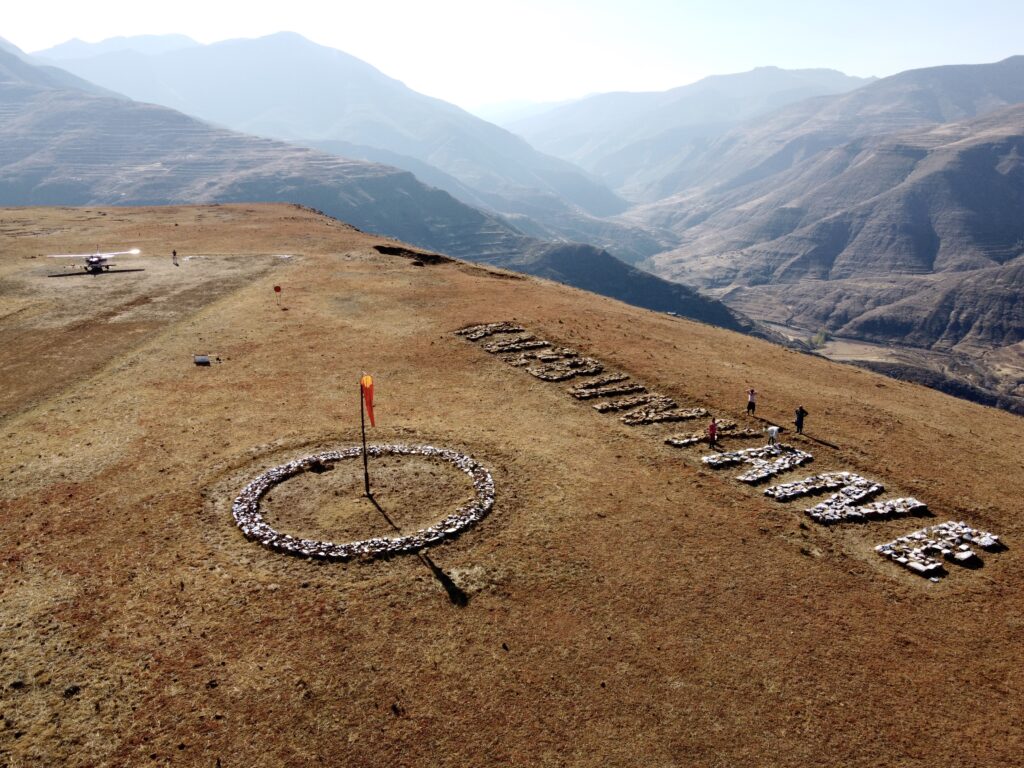
Back in Maseru, Lesotho’s capital city, Sefiri mentioned the problem to pilot Joe Adams. He felt that addressing this basic need might soften hearts toward the gospel. MAF had been flying to Kuebunyane for years, bringing in evangelists and medical services. Kuebunyane is a seven-hour drive over rough dirt roads, then a hike with a 1,200-foot descent, a river crossing, and a 1,200-foot climb up the side of a mountain.
Joe contacted several organizations, but none worked in Lesotho. Then, by chance, he saw the Lokisa Water Project on Facebook.
Lokisa Water Project
Lokisa is a small ministry run by Tom and Lauren Jacobs, two Australian believers who live in Lesotho. Tom is an engineer, and Lauren is a nurse. They both saw how access to safe, clean water is life-changing in Lesotho, where almost half the population lives in poverty.
During the pandemic, the Jacobs returned to Australia and worked remotely, but they knew from friends in Lesotho how bad it was for the people there. They were convicted by James 2:15-17 to live out their faith practically.
“One small thing we could do was assist by getting water to these people who were in need,” Tom said. “So that’s kind of how Lokisa got born.”
In the Sesotho language, “Lokisa” means to repair, correct, or fix. The Jacobs started out small, repairing older systems or installing taps in communities. They’ve never had to look for a project; the projects come to them, usually through a friend of a friend who knows of a need.
They especially like to work with schools, because small conveniences like a water tap and a working toilet make a big difference in the lives of the kids, including improved school attendance.
The Largest Project Ever
When Tom got the email from Joe, he laughed, because they actually knew each other through the expat community in Lesotho. Joe hadn’t realized that Tom and Lauren ran the Lokisa water project.
Kuebunyane was so far off the beaten path, Tom had never heard of it before. And it would typically be much too far to reach without MAF’s help. “Without a plane, that place is like the ends of the earth,” Tom said.
But since MAF routinely visited Kuebunyane, “It gave us the courage to actually go to an insanely remote place,” Tom said.
MAF flew Lokisa staff to the community for a survey. Through careful planning, they identified the placement of water taps and toilets. They figured out how to pipe water down from the mountains using gravity or pumps and hired community members to dig the trenches, lay pipes, and pour concrete.
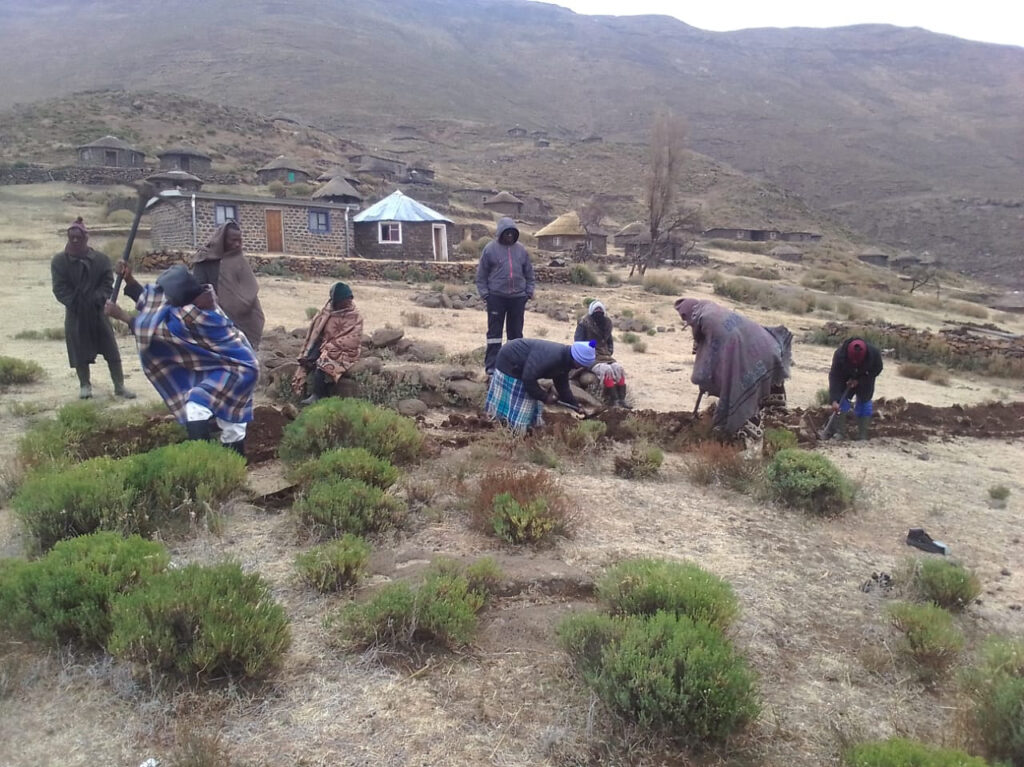
MAF transported crew and smaller materials for the project, but larger items had to go by road. Lokisa constructed the simple bathroom structures of corrugated metal in the capital city and then transported them to the location. That meant each structure, which is similar to an outhouse, was carried by truck and then by donkey up and down the steep valleys into the village.
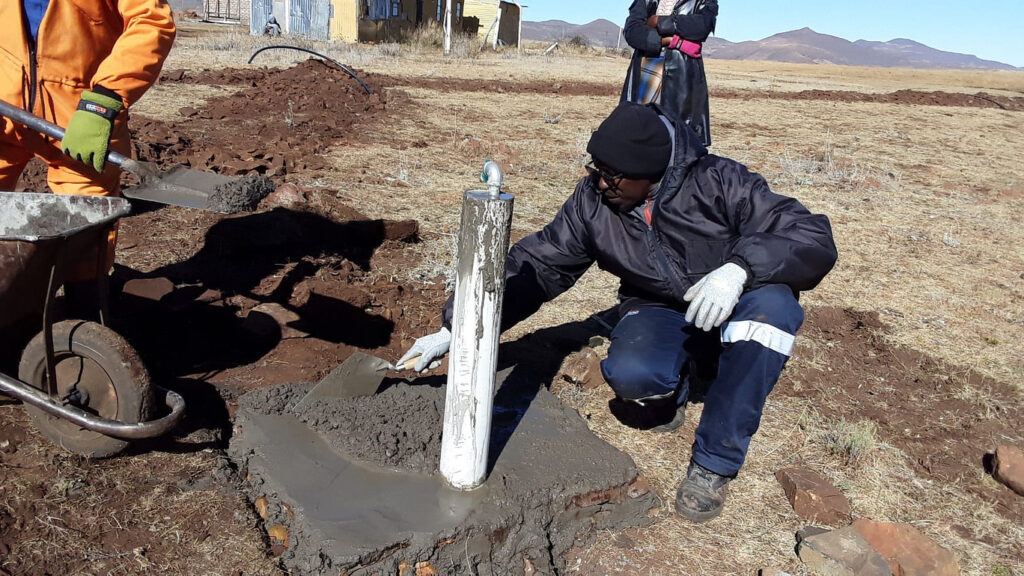
Kuebunyane was Lokisa’s biggest project ever. It took eight months. They fitted 19 water taps, nearly a mile of pipework, fixed five springs/tanks, and installed 14 bathrooms. At the nearest primary school (which is a two-hour walk away), Lokisa installed two taps, a rainwater tank, a hand washing station, and eight toilets. Before, the 156 children at the school had no water or bathrooms.
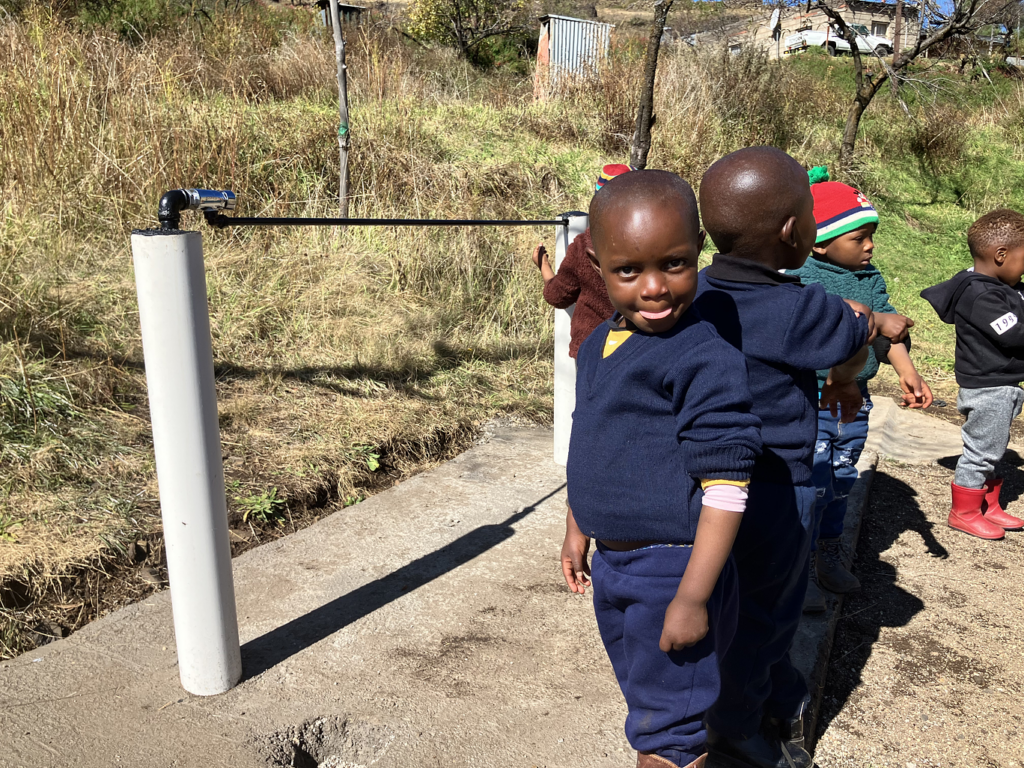
Lokisa purposefully trains community members to make repairs, and they leave behind tools and spare parts. They also work with the village chief to set up a water council responsible for maintenance.
This forethought has already been useful in Kuebunyane. In January, one of the pipes was leaking, but the water committee soon fixed the pipe and had the tap working again soon.
Thank You for the Water
The village of Kuebunyane has now had water for several months, and it has dramatically improved their lives. People are no longer constantly sick. The health clinic has water. Everyone is saving hours each week by not hauling water. People have privacy and feel safer when using the bathroom.
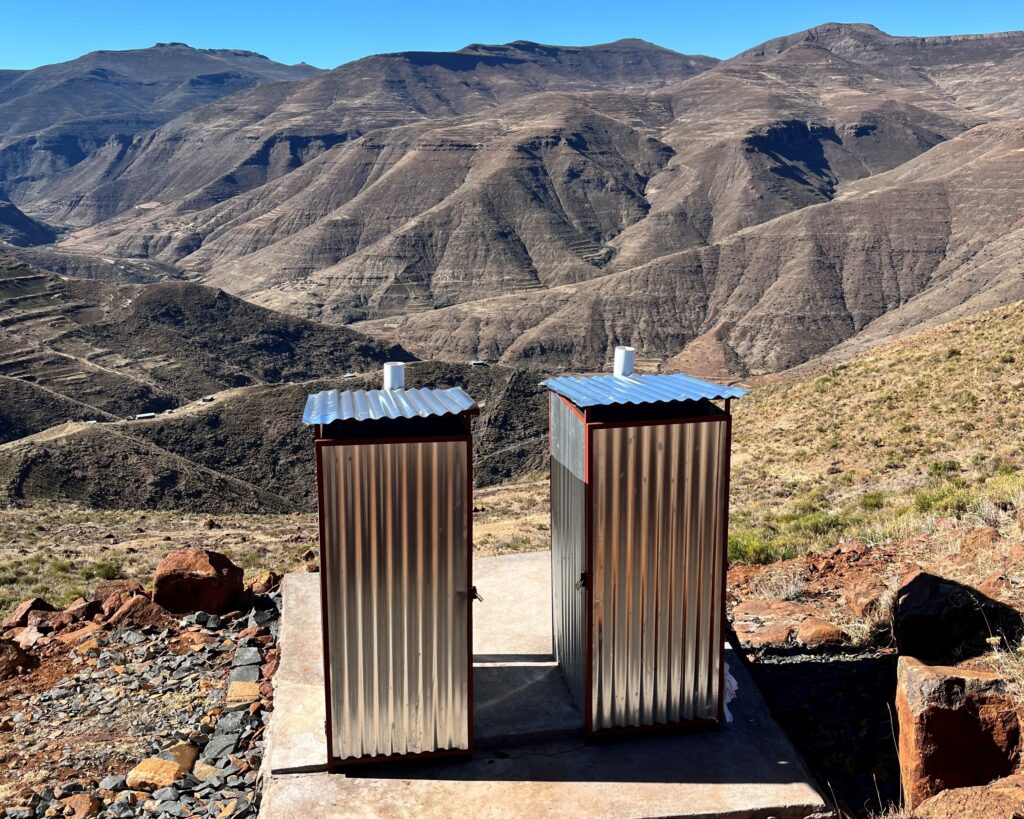
MAF staff are aware that bringing water to Kuebunyane is only one part of the mission there. “Bringing in water projects and helping out schools and bringing in health, it only does so much,” Joe said. “When we bring Jesus, there’s hope. Without it, without that, there’s no lasting change.”
Now, when Sefiri visits Kuebunyane, he no longer worries. The chief’s requests have changed to profuse thanks. “He says thank you so often, it’s become like a greeting,” said Sefiri.
Story appeared in FlightWatch vol. 3, 2024. Read the entire issue here:
